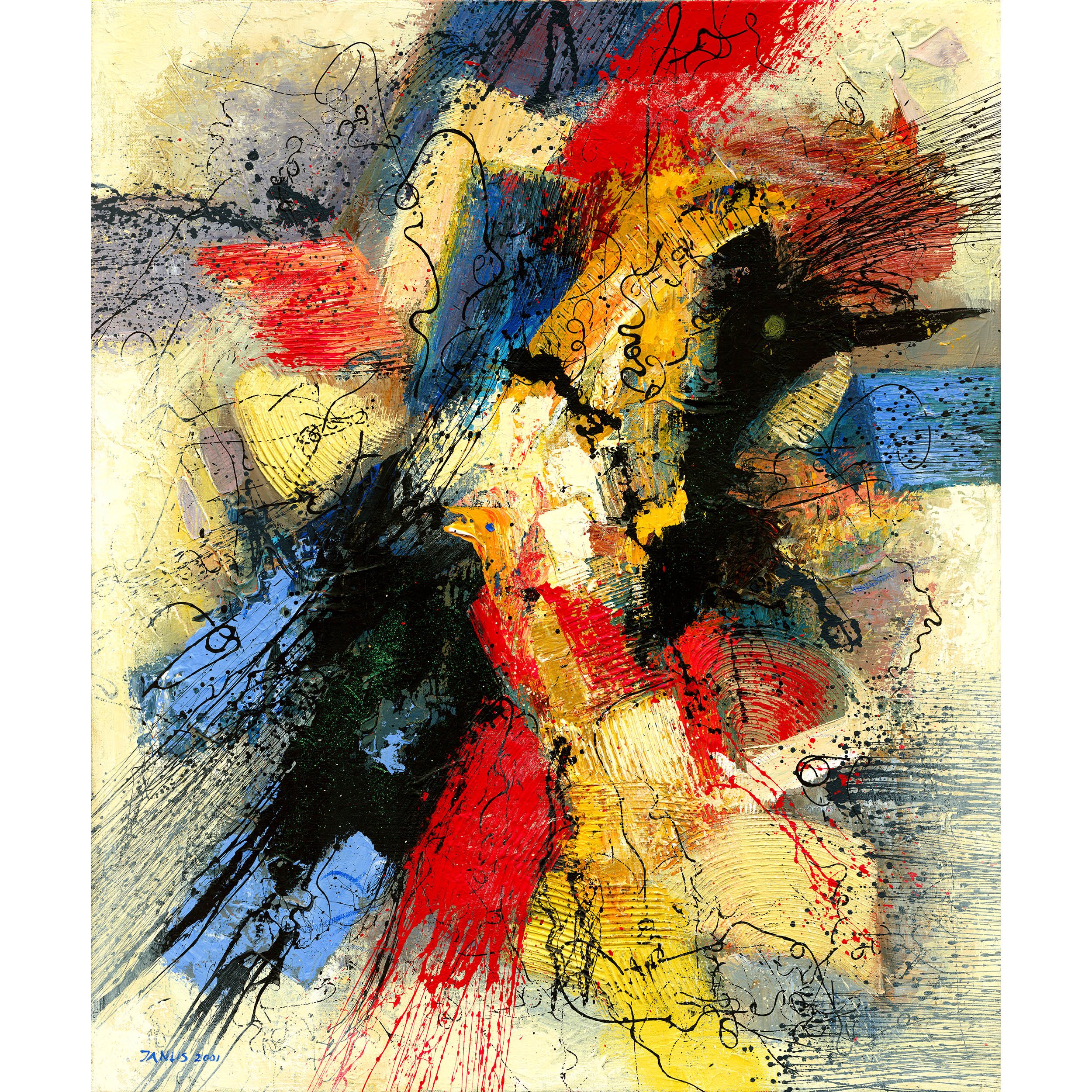 Image 1 of 1
Image 1 of 1


“Raven and the nightingale 2001”
Janus’ “Raven and the Nightingale 2001” is a visual ballad of two voices which—though vastly different—meet in a single, dramatic chord. The raven and the nightingale—shadow and light, cry and song, gravity and delicacy—are not enemies here, but two necessary sides of the same emotion.
The central clash of black and red evokes the raven—strong, unsettling, perhaps a guardian of hidden truths. A golden glow, spreading from within, represents the nightingale’s voice—pure, unexpected, carrying hope where none was thought to remain.
The lines—nervous, dancing, sometimes trembling—express the vibrations of these voices, their emotional tension. There is no silence here—the entire canvas resounds like a composition of contradictions that together form harmony.
This is not a tale of one overcoming the other—it is a hymn to the necessity of both.
Janus’ “Raven and the Nightingale 2001” is a visual ballad of two voices which—though vastly different—meet in a single, dramatic chord. The raven and the nightingale—shadow and light, cry and song, gravity and delicacy—are not enemies here, but two necessary sides of the same emotion.
The central clash of black and red evokes the raven—strong, unsettling, perhaps a guardian of hidden truths. A golden glow, spreading from within, represents the nightingale’s voice—pure, unexpected, carrying hope where none was thought to remain.
The lines—nervous, dancing, sometimes trembling—express the vibrations of these voices, their emotional tension. There is no silence here—the entire canvas resounds like a composition of contradictions that together form harmony.
This is not a tale of one overcoming the other—it is a hymn to the necessity of both.

